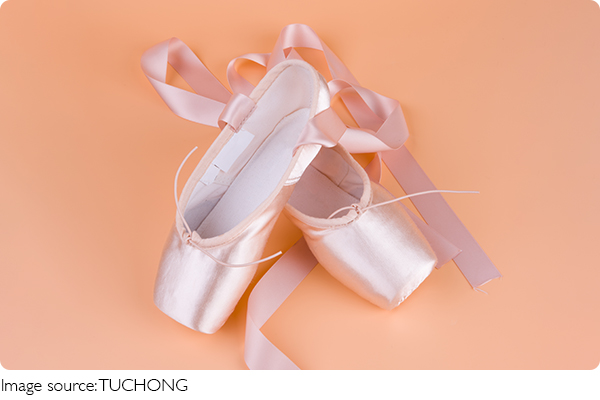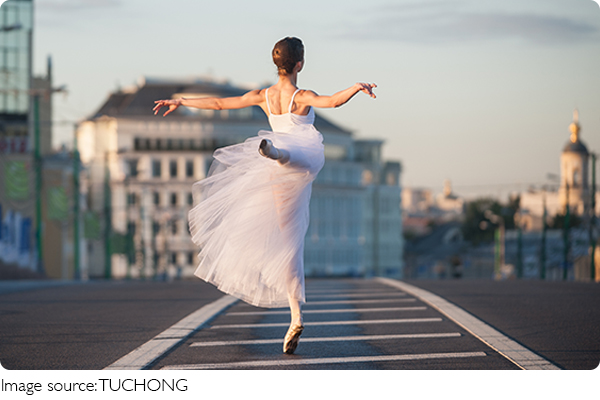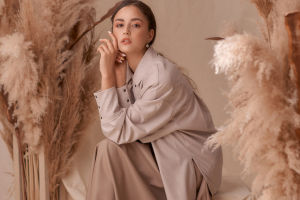Pointe Shoe Shopping

Stepping onto pointe shoes is a special milestone in ballet, signaling the development of strong ankle muscles and a new level of technical skill.
For young dancers, this usually happens around the age of 11, but the decision to begin pointe work is always best made by a qualified teacher who can assess readiness. Once ready, choosing the right pair of pointe shoes is essential for comfort, safety, and performance.
This guide will walk through the key factors to consider when selecting pointe shoes, helping Lykkers find the best fit for their feet and dancing journey.
The Four Key Criteria for Choosing Pointe Shoes
The Stiffness of the Sole
The essential support in pointe shoes comes from the stiff sole, often called the shank. This reinforcement allows dancers to rise onto their toes safely. However, shank stiffness varies widely between brands and models, so trying on different shoes is important. The ideal shank bends slightly under the dancer’s weight when rising onto pointe.
If the sole is too hard and inflexible, it indicates the dancer’s foot muscles may not yet be strong enough for that level of support. Conversely, if the sole is too soft and bends too easily, it means the foot is strong and the dancer may need a stiffer shank to provide adequate support during pointe work.
The Width of the Shoe
Pointe shoes typically come in different widths: narrow, medium, and wide. The correct width is critical to avoid discomfort or injury. When transitioning from demi-pointe (half-toe) shoes to full pointe shoes, it is normal to feel some snugness around the ball of the foot.
If the shoe feels excessively tight near the metatarsal joints, a wider model is recommended. On the other hand, if the foot moves too much inside the shoe, slipping around, a narrower width is preferable. Finding the right width ensures stability and comfort during pointe exercises.
The Height of the Vamp
The vamp is the upper part of the shoe extending from the toe platform to the drawstring. It should cover the toes up to the first joint where the foot bends (the metatarsophalangeal joint).
If the vamp is too high, it can block the dancer from fully rolling onto the platform of the pointe shoe and hinder smooth transitions from demi-pointe to full pointe. The ideal vamp length depends on the shape of the dancer’s foot and the length of the toes. Proper vamp height allows for a natural and secure foot position when rising onto pointe.
Comfort and Fit
Comfort is crucial since pointe shoes can cause pressure and discomfort if not well fitted. Some models come with a pre-padded toe box or soft lining to reduce pain and protect the toes. This feature can be helpful for dancers who want to avoid additional toe pads. When choosing size, stand with feet parallel and flat on the floor.
If the big toe touches the tip of the shoe and cannot extend properly, the shoes are too small. If toes have room to move freely or the heel slips out, the shoes are too large. Proper fit ensures better balance, reduces injury risk, and allows for longer practice sessions.
Additional Tips for Lykkers
Testing on Pointe
Always try the shoes by standing and rising onto the tips of the toes. This gives a clear sense of how the shoe supports and responds to the dancer’s weight. Shoes should feel secure without pinching or causing numbness.
Listening to the Teacher’s Guidance
The decision to start pointe work and the choice of shoe should always be overseen by a ballet instructor. Teachers can provide valuable advice on appropriate brands, stiffness, and fit according to individual foot shape and skill level.
Gradual Progression
Strong foot and ankle muscles are essential to perform pointe safely. Developing these muscles gradually through preparatory exercises helps ensure a smooth and injury-free transition to pointe shoes.

In Conclusion
Selecting the right pointe shoes is a careful process that balances support, fit, and comfort. By focusing on shank stiffness, shoe width, vamp height, and overall comfort, Lykkers can find pointe shoes that help them dance confidently and gracefully.
Testing shoes on pointe and seeking professional guidance from teachers further ensures a safe and enjoyable experience. With the right shoes, every step on pointe becomes an expression of strength and beauty in ballet.
-
 Pets and Mental HealthHow Therapy Animals Help Humans Cope with Mental Health Issues
Pets and Mental HealthHow Therapy Animals Help Humans Cope with Mental Health Issues -
 Hot Mobile PicksCan't decide what to play? These 7 mobile games are trending this month—for strategy lovers, casual fans, and serious grinders.
Hot Mobile PicksCan't decide what to play? These 7 mobile games are trending this month—for strategy lovers, casual fans, and serious grinders. -
 Camera SkillsThink "Camera Presence" Is Natural? Here’s How It’s Actually Built Through Training!
Camera SkillsThink "Camera Presence" Is Natural? Here’s How It’s Actually Built Through Training!